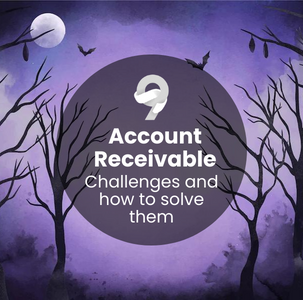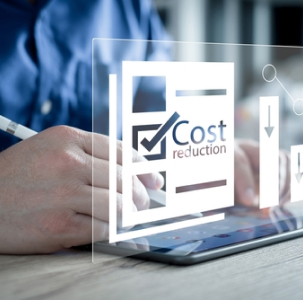Key Takeaways
- Assessing the creditworthiness of a new customer is essential for maintaining a steady cash flow and avoiding cash flow problems in your business.
- The five Cs of credit (character, capacity, capital, collateral, and conditions), help evaluate a customer’s ability to repay borrowed credit.
- To minimize financial risk while extending credit, utilize digital credit management and automated scoring.
- Optimizing working capital and minimizing risk can be achieved by implementing digital credit management processes and utilizing automated credit scoring solutions.

Introduction
It is no secret that a steady cash flow is crucial for operating a successful business. However, it may surprise you to learn that cash flow issues often play a significant role in the downfall of many businesses, particularly SMBs.
According to a QuickBooks survey, 60% of small business owners have encountered cash flow problems in the post-pandemic economy.
One of the major reasons for cash flow problems is late or non-payment. This occurs when businesses extend credit to customers without conducting proper creditworthiness evaluations.
To avoid cash-related challenges, small and mid-sized businesses should establish a robust credit check policy before onboarding new customers.

Source: QuickBooks
What Is Creditworthiness?
Creditworthiness is an evaluation of a company’s financial reliability to ensure that it can meet its debt obligations on time. This assessment is crucial for businesses, as it helps them make informed decisions about whether to offer credit terms to another company or not.
B2B creditworthiness hinges on various factors. First, a company’s financial stability, reflected in its consistent revenue, plays a vital role. Equally important is the payment history: on-time payments improve creditworthiness, while late or missed payments have a negative impact.
Another vital aspect is the business’s credit score, which is a numerical representation of its creditworthiness. Lenders and suppliers often rely on credit scores to quickly assess the risk associated with extending credit to a customer.
What is corporate creditworthiness?
Corporate creditworthiness refers to the financial reliability of a corporation, specifically focusing on its ability to fulfill financial obligations.
Corporate creditworthiness is assessed through various metrics, one of which is the business credit score. This score serves as a measure of a company’s financial stability and its likelihood of fulfilling its financial commitments promptly. Ranging from 1 to 100, with higher scores indicating better creditworthiness.
What Are the 5 Factors of Creditworthiness?
Businesses use multiple criteria to evaluate creditworthiness of a customer.The five Cs of credit is one of the most well-known techniques for assessing creditworthiness. Understanding the five Cs—character, capacity, capital, collateral, and conditions—can assist in determining a customer’s capability to repay the borrowed credit. Let’s look at what each one signifies.
1. Character
Character assesses how dependable and trustworthy a customer is. To gauge a customer’s character, one must analyze their credibility and background. Credit history is one of the main factors to consider while evaluating a customer’s character. It contains a detailed description of the customer’s credit report and credit score. This data includes how long the customer has been in business, bankruptcies, whether they make timely payments, and more. Credit scores vary from 300 to 850, with higher scores indicating strong creditworthiness of a company.

2. Capacity
Capacity refers to the ability of the customer to repay their debt. To evaluate the capacity of a customer, consider cash flow statements, business debt, and payment history. The Debt Service Coverage Ratio (DSCR) and Debt-to-Income ratio (DTI) help evaluate a company’s cash flow and overall health. A DSCR of 1.25 or higher and a DTI ratio of 36% or lower is considered ideal.

3. Capital
Capital signifies the total funds and assets (both financial and non-financial) owned by a company. Before extending credit to a new customer, evaluate the worth of the customer’s business in terms of their investment in fixed assets and other instruments. Review the customer’s bank records and financial statements to get a clear picture of their capital. If these statements show a trend of strong capital growth, the customer is less risky and can be assigned a higher credit limit.

4. Collateral
Collateral refers to assets that a customer commits to back a line of credit. These may include fixed assets such as inventories, corporate bonds, or real estate. Companies often require collateral as assurance for extending credit. When dealing with a high-risk customer, it’s advisable to ask for collateral to minimize the likelihood of bad debts.

5. Conditions
Conditions are terms established by a company based on its policies, economic conditions, or prevailing regulations in the customer’s operational region. Geographic location, industry type, currency fluctuations, and the political environment are factors influencing a company’s payment terms and conditions. A customer situated in a stable geopolitical environment is more creditworthy, facing lower economic risks

How To Determine Creditworthiness of a Customer?
Before granting credit, a company should assess the customer’s competence to manage and repay outstanding debts. Here are six ways to determine the creditworthiness of a potential customer.
1. Collect relevant details to extend credit
Collecting relevant information about the client is the first step in assessing creditworthiness. Before extending credit, it’s crucial to ask customers to complete a business credit application form, which includes general business information, bank references, credit history, and more. These details help consolidate client data, expediting the customer onboarding process.
2. Check credit reports
Analyzing credit reports is an ideal method to evaluate creditworthiness of a customer. A credit report contains information on the company and its financials, enabling you to generate credit scores. It depicts a company’s capacity to pay by tracking its payment history and public records. Credit reports of a company are available for purchase from credit reporting agencies such as Experian, D&B, and Equifax.
3. Assess financial reports
The financial report of a company provides insights into its cash position. Financial reports include the cash flow statement, income statement, and the balance sheet of the company. The financial health of a new customer should be examined thoroughly by reviewing their public financial statements.
4. Evaluate the debt-to-income ratio
Another way to evaluate the business credit risk of a customer is by examining their debt-to-income ratio. This ratio provides insights into how much of their monthly income is allocated towards debt repayment. Calculate the ratio by dividing monthly debt payments by gross monthly income.

A low DTI ratio indicates a healthy balance between debt and income, whereas a high DTI ratio shows that a client has more obligations than the monthly income.
5. Conduct credit investigation
You must use multiple sources to conduct further investigations to evaluate the business credit risk of a customer. These investigations should contain:
- Customer background and history
- Credit policies
- Accounts receivable aging report
- Economic and political climate analysis
- Future business probability
All these factors contribute to better decision-making and customer authentication.
6. Perform credit analysis
After gathering all necessary information about the new customer, conduct a comprehensive account analysis. Evaluate trade references, scrutinize financial statements, and apply credit analysis to predict the probability of default. While performing credit analysis, the profitability ratio, leverage ratio, and liquidity ratio are some of the key financial metrics to consider.
How to Evaluate Credit Worthiness When There Is No Data Available on the Potential Customer?
While onboarding new customers, a company runs credit checks through credit reporting agencies. However, sometimes credit agencies may not have all the required information or may have incorrect data. Such a situation does not indicate that the client is not creditworthy. It simply implies that the company did not supply sufficient information to the agencies to generate a credit report.
Asking the client to provide active trade references can solve the issue. A trade reference is a detailed report of the customer’s payment history with its vendors and suppliers. It provides much information on the client’s credibility. Checking further with these vendors and suppliers can help you get more details on the customer. Here are a few questions you can consider asking:

Going above and Beyond
Mid-size businesses often rely on their customers for their working capital requirements and hence need to keep a close eye on the clients’ financial health. Use the tips provided in this step-by-step guide to optimize your working capital and minimize risk.
To streamline your credit portfolio and customer onboarding, replace paper-intensive credit management processes with digital practices. Utilizing solutions like RadiusOne Credit Risk Application will help you become more efficient. Our automated credit scoring feature, based on industry-specific best practices, helps you predict customer payments.
FAQs on Creditworthiness
1. How do you measure a company’s credit risk?
Measuring a company’s credit risk involves evaluating its financial health, credit history, and industry trends. Key indicators like credit rating, debt-to-equity ratio, and payment history are analyzed to assess the likelihood of default.
2. What two factors determine a company’s level of credit risk?
Credit risk is determined by a company’s financial health and credit history. These factors assess its ability to meet obligations and provide insights for lenders and investors.
3. What is the best measure of creditworthiness?
The best measure of creditworthiness is a thorough evaluation of the five Cs of credit: character, capacity, capital, collateral, and conditions. Considering these factors provides a comprehensive understanding of an individual or company’s creditworthiness, aiding lenders in making informed decisions.











